BMW iX1 vs MG HS – Differences & prices compared
Compare performance, boot space, consumption and price in one view.
Find out now: which car is the better choice for you – BMW iX1 or MG HS?
The BMW iX1 (SUV) comes with a Electric engine and Automatic transmission. In comparison, the MG HS () features a engine with transmission.
When it comes to boot capacity, the BMW iX1 offers 490 L, while the MG HS provides – depending on how much space you need. If you’re looking for more power, decide whether the 313 HP of the BMW iX1 or the of the MG HS suits your needs better.
In terms of consumption, the values are 15.80 kWh per 100 km for the BMW iX1, and for the MG HS.
Price-wise, the BMW iX1 starts at 41800 £, while the MG HS is available from . Compare all the details and find out which model fits your lifestyle best!
BMW iX1
The BMW iX1 stands out as a versatile addition to the electric vehicle market, seamlessly combining compact dimensions with advanced electric technology. Its sophisticated design elements and premium interiors ensure a luxurious driving experience, while the vehicle's performance focuses on delivering both efficiency and agility. With enhanced connectivity features and an emphasis on sustainability, this model represents a significant step forward in BMW's commitment to a greener future.
details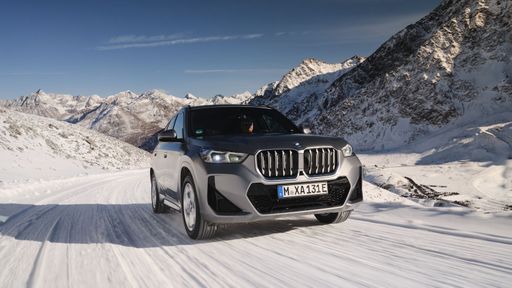 @ press.bmwgroup.com
@ press.bmwgroup.com
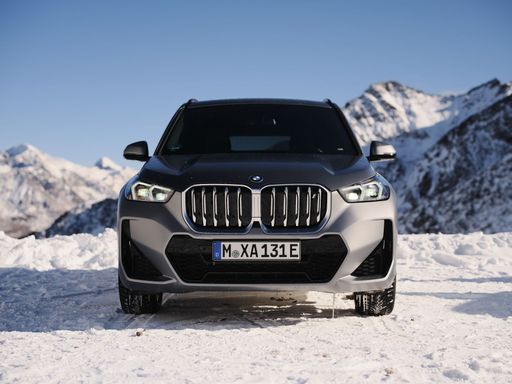 @ press.bmwgroup.com
@ press.bmwgroup.com
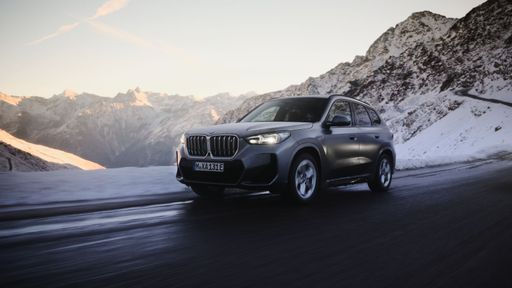 @ press.bmwgroup.com
@ press.bmwgroup.com
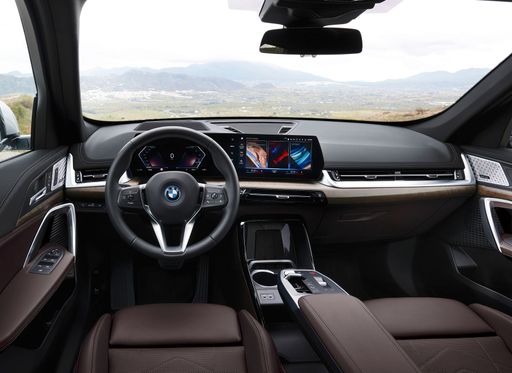 @ press.bmwgroup.com
@ press.bmwgroup.com
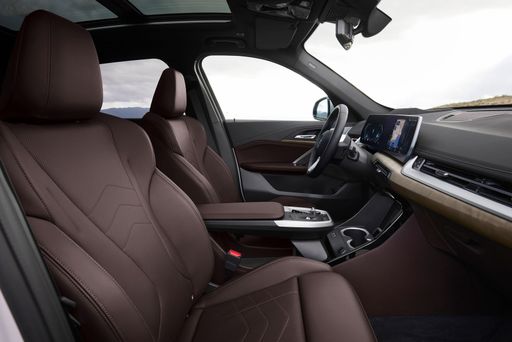 @ press.bmwgroup.com
@ press.bmwgroup.com
MG HS
The HS impresses with its sleek design and stylish exterior, setting a new standard in its class. Inside, it offers a spacious and comfortable cabin, complete with modern features that enhance the driving experience. With its focus on practicality and performance, the HS stands out as a compelling choice for those seeking a versatile and appealing vehicle.
details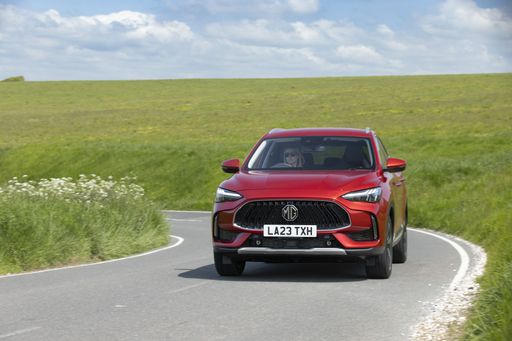 @ mg.co.uk
@ mg.co.uk
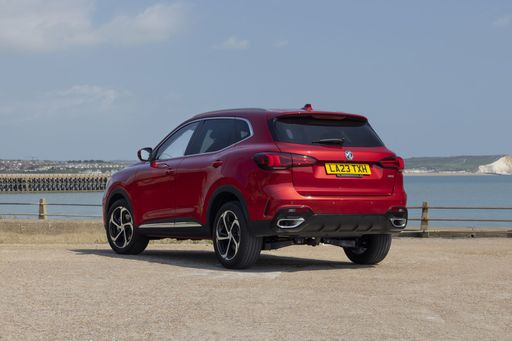 @ mg.co.uk
@ mg.co.uk
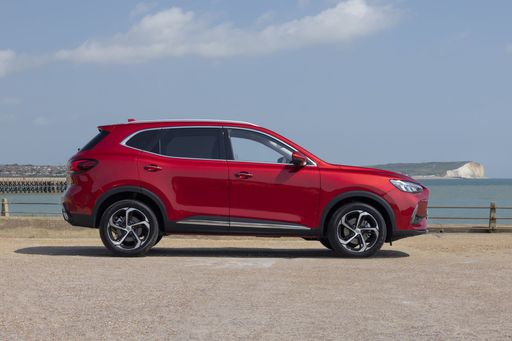 @ mg.co.uk
@ mg.co.uk
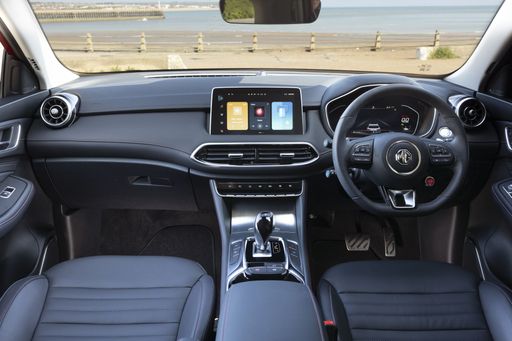 @ mg.co.uk
@ mg.co.uk

|

|
|
|
|
Costs and Consumption |
|
|---|---|
|
Price
41800 - 54600 £
|
Price
-
|
|
Consumption L/100km
-
|
Consumption L/100km
-
|
|
Consumption kWh/100km
15.8 - 17.1 kWh
|
Consumption kWh/100km
-
|
|
Electric Range
436 - 463 km
|
Electric Range
-
|
|
Battery Capacity
64.80 kWh
|
Battery Capacity
-
|
|
co2
0 g/km
|
co2
-
|
|
Fuel tank capacity
-
|
Fuel tank capacity
-
|
Dimensions and Body |
|
|---|---|
|
Body Type
SUV
|
Body Type
-
|
|
Seats
5
|
Seats
-
|
|
Doors
5
|
Doors
-
|
|
Curb weight
1940 - 2085 kg
|
Curb weight
-
|
|
Trunk capacity
490 L
|
Trunk capacity
-
|
|
Length
4500 mm
|
Length
-
|
|
Width
1845 mm
|
Width
-
|
|
Height
1616 mm
|
Height
-
|
|
Payload
495 kg
|
Payload
-
|
Engine and Performance |
|
|---|---|
|
Engine Type
Electric
|
Engine Type
-
|
|
Transmission
Automatic
|
Transmission
-
|
|
Transmission Detail
-
|
Transmission Detail
-
|
|
Drive Type
Front-Wheel Drive, All-Wheel Drive
|
Drive Type
-
|
|
Power HP
204 - 313 HP
|
Power HP
-
|
|
Acceleration 0-100km/h
5.6 - 8.6 s
|
Acceleration 0-100km/h
-
|
|
Max Speed
170 - 180 km/h
|
Max Speed
-
|
|
Torque
250 - 494 Nm
|
Torque
-
|
|
Number of Cylinders
-
|
Number of Cylinders
-
|
|
Power kW
150 - 230 kW
|
Power kW
-
|
|
Engine capacity
-
|
Engine capacity
-
|
General |
|
|---|---|
|
Model Year
2022 - 2023
|
Model Year
-
|
|
CO2 Efficiency Class
A
|
CO2 Efficiency Class
-
|
|
Brand
BMW
|
Brand
-
|
BMW iX1
A New Era of Innovation: Meet the BMW iX1
The automotive world has seen a seismic shift towards sustainability and electrification, and BMW has solidified its place in this evolution with the introduction of the BMW iX1. As a fully electric SUV, the iX1 serves as a testament to how luxury, performance, and eco-consciousness can harmoniously blend in the modern automotive landscape.
Exquisite Design Meets Purposeful Engineering
The BMW iX1 is not just an electric vehicle; it's an embodiment of cutting-edge design and technology. With its bold SUV silhouette, the iX1 boasts dimensions of 4500 mm in length, 1845 mm in width, and 1616 mm in height, providing a spacious yet agile presence on the road. Its dynamic aesthetic is complemented by an aerodynamic form that enhances efficiency, offering a drag coefficient that rivals traditional SUV models.
Powertrain and Performance Specifications
Beneath the hood of the BMW iX1 lays an electric motor that signifies the future of automotive engineering. Available variants offer power outputs ranging from 204 to 313 PS (150 to 230 kW). The iX1 comes with either a front-wheel or all-wheel drivetrain, catering to different driving preferences. The xDrive30 variant, in particular, features all-wheel drive, delivering up to 313 PS for those who crave enhanced traction and control.
With a commendable electric consumption of 15.8 to 17.1 kWh per 100 km, the iX1 strikes a fine balance between power and efficiency. Its acceleration stats are equally impressive, with the ability to go from 0-100 km/h in as little as 5.6 seconds. This ensures that while it's eco-friendly, it does not compromise on the exhilaration factor. The vehicle can reach a top speed range between 170 and 180 km/h.
A Journey Without Interruptions: Range and Battery Life
The iX1's battery, boasting a capacity of 64.8 kWh, provides a substantial driving range of 436 to 463 km on a single charge, depending on the variant. This means long road trips are not only feasible but enjoyable, eliminating the range anxiety often associated with electric vehicles.
Comfort and Technological Interior
Inside, the iX1 exemplifies BMW’s commitment to luxury and innovation. It’s a five-seater SUV designed with comfort at its forefront, featuring advanced technological interfaces that enrich the driving experience. The spacious cabin offers 490 litres of boot space, ensuring practicality without sacrificing style.
In terms of monthly costs, owning an iX1 can range between €1,147 and €1,453, considering the zero-emission appeal with a CO2 efficiency class of A.
The Financial Aspect of Sustainability
With a price range from €48,400 to €63,140, the BMW iX1 isn't just a vehicle—it's an investment in sustainable motoring. Factoring in a cost of around 45.9 to 58.1 cents per kilometre, the iX1 offers an economically viable option for the eco-conscious driver.
Conclusion: The Future Is Now
The BMW iX1 stands as a beacon of what the future holds for zero-emission vehicles. With a melding of sustainability, performance, and luxury, it's not just a car, but a glimpse into the next chapter of automotive history.
MG HS
Introducing the MG HS: A Fusion of Style and Performance
The MG HS is making its mark as a standout contender in the increasingly competitive SUV market. Known for its blend of stylish design, advanced technologies, and impressive performance, the HS caters to a variety of drivers looking for a reliable and dynamic vehicle. In this article, we dive into the technical aspects and innovations that make the MG HS a remarkable choice for 2024.
Dynamic Powertrains
The MG HS is equipped with an array of powertrain options that emphasize performance while maintaining efficiency. The standout engine is the 1.5T GDI petrol unit, delivering a solid 170 horsepower across various gearbox options, including both manual and automatic transmissions. The manual variants offer a fuel consumption of 7.4 L/100km, while the automatic versions slightly increase this to 7.6 L/100km, appealing to those who prefer a more effortless driving experience.
On the eco-friendly front, the MG HS also features a plug-in hybrid variant, the 1.5T GDI PHEV, which boosts power to an impressive 272 HP. This PHEV model touts an efficiency rating of just 0.5 L/100km and offers an electric-only driving range of up to 100 km. This innovation highlights MG's commitment to sustainability without compromising on performance.
Design and Dimensions
The MG HS boasts a contemporary SUV design characterized by fluid lines and a bold front grille that commands attention on the road. Measuring between 4655 mm and 4670 mm in length and 1890 mm in width, it is spacious enough to accommodate five passengers comfortably. The HS features a generous trunk capacity ranging from 441 L to 507 L, making it practical for family trips or everyday errands.
With a height of either 1663 mm or 1664 mm, passengers benefit from ample headroom and an airy cabin feel. The vehicle’s well-crafted interior is designed with emphasis on comfort and functionality, positioning the MG HS as a reliable choice for both urban and adventurous outings.
Technological Innovations
The MG HS is not just about performance and design; it also integrates advanced technology features aimed at enhancing the driving experience. The infotainment system includes a user-friendly touchscreen that supports both Android Auto and Apple CarPlay, allowing seamless connectivity with smartphones. In addition, various trim levels offer features such as leather upholstery, panoramic sunroofs, and advanced driver-assist systems ensuring both safety and comfort.
Safety is another cornerstone of the MG HS, equipped with multiple airbags, electronic stability control, and an advanced braking system. This commitment to safety aims to provide peace of mind for drivers and their families on the road.
Efficiency and Driving Experience
With a CO2 efficiency class ranking from F to B, the MG HS demonstrates its ability to balance performance with environmental considerations. The manual versions achieve a 0-100 km/h acceleration in approximately 9.4 to 9.6 seconds, while the plug-in hybrid variant speeds the process up to an impressive 6.8 seconds.
Coupled with a maximum speed of up to 195 km/h, the MG HS ensures a thrilling and engaging driving experience, whether navigating city streets or cruising on the highway. Its adaptive handling and responsive steering provide precise control, making every drive enjoyable.
Conclusion: The MG HS Stands Out in 2024
In the ever-evolving automotive landscape, the MG HS emerges as a formidable player, brilliantly combining style, performance, and modern technology. With its array of powerful engines, significant advancements in hybrid technology, and a focus on driver and passenger comfort, the HS is poised to be a popular choice among SUV enthusiasts in 2024. Whether opting for a petrol variant or embracing the hybrid revolution, the MG HS offers a driving experience that caters to contemporary needs without sacrificing excitement.
The prices and data displayed are estimates based on German list prices and may vary by country. This information is not legally binding.
